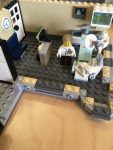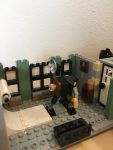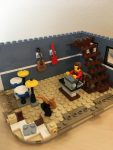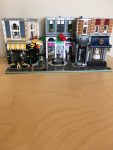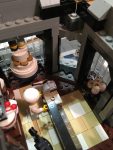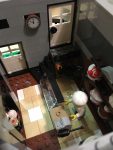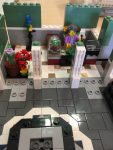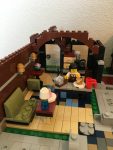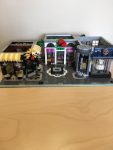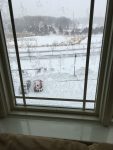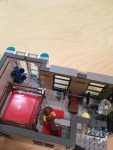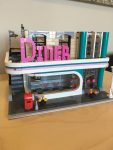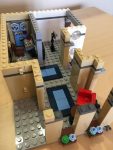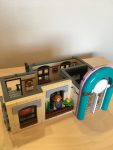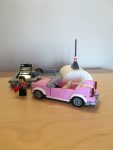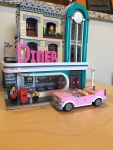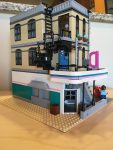The second floor of the Assembly Square kit contains a dentist’s office, photo studio, and a musical instrument store.
Dentist’s office:
Look at the dentist’s big smile. You don’t suppose that’s because he’s looking forward to the next patient’s pain, do you?
Photo Studio:
I can’t get over the idea of building a seamless backdrop out of Lego bricks.
Musical Instrument Store:
Just enough stock to supply one band.
Exterior including 2nd floor:
Love the tower room even if it doesn’t have anything inside it at this level.
Now on to the third floor.
OK. I’ll admit, I’ve already finished the interior of the first unit of the third floor. Because I had to wait for daylight to take pictures but not to continue building. 🙂
TTYL,
Linda

